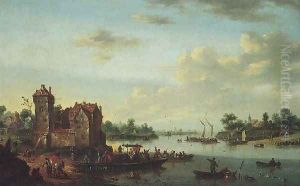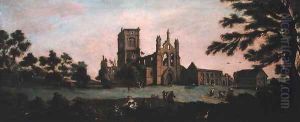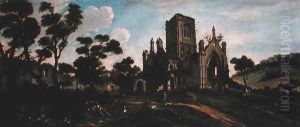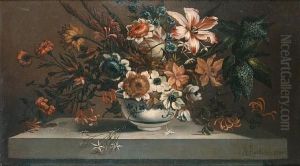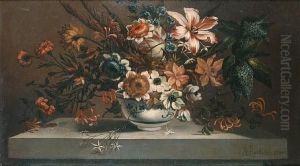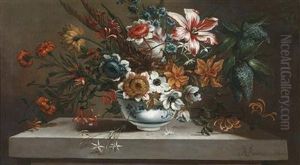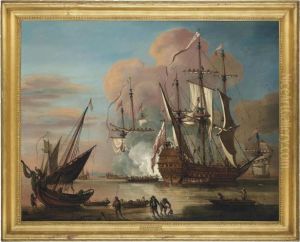Johann Baptiste Bouttats Paintings
Johann Baptiste Bouttats, born in the 1640s and deceased in 1703, was a Flemish engraver, part of the extensive Bouttats family, which included several generations of skilled artists active in the printmaking and painting fields during the 17th and 18th centuries. The Bouttats family, originally from Antwerp, played a significant role in the art scene of the Southern Netherlands, contributing to the flourishing Baroque style that characterized the region's artistic output.
Johann Baptiste Bouttats is known for his masterful engravings, which capture the intricate details and dynamic compositions typical of the Baroque era. His works often featured religious themes, portraits, landscapes, and scenes from daily life, showcasing his versatility and adeptness in handling various subjects. His engravings not only served as artworks in their own right but also as illustrations for books, contributing to the spread of knowledge and the popularization of art during his time.
Despite the prominence of the Bouttats family in the art world, specific details about Johann Baptiste's life and training are somewhat scarce, as is common with many artists of the period. It is believed that he was trained within the family workshop, a common practice that ensured the continuation of style and technique through generations. This training would have provided him with the skills to excel in the demanding art of engraving, which requires precision and a deep understanding of both artistic and technical aspects.
Over the course of his career, Johann Baptiste Bouttats collaborated with publishers and other artists, contributing to various projects that required his engraving skills. His work reflects the artistic movements of his time and the influence of prominent artists of the Baroque period. Despite the limited biographical information, his surviving engravings provide a valuable insight into the artistic endeavors of the Bouttats family and the vibrant cultural landscape of the Southern Netherlands in the 17th century.
Johann Baptiste Bouttats' legacy is preserved through his contributions to the world of engraving and the arts, marking him as a notable figure in the Bouttats family lineage of artists. His death in 1703 marked the end of a life dedicated to the meticulous craft of engraving, but his works continue to be appreciated for their beauty and technical prowess, embodying the spirit of the Baroque era in which he lived and worked.
